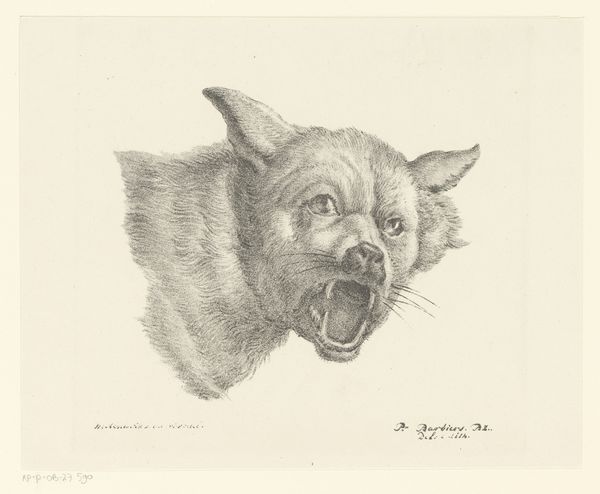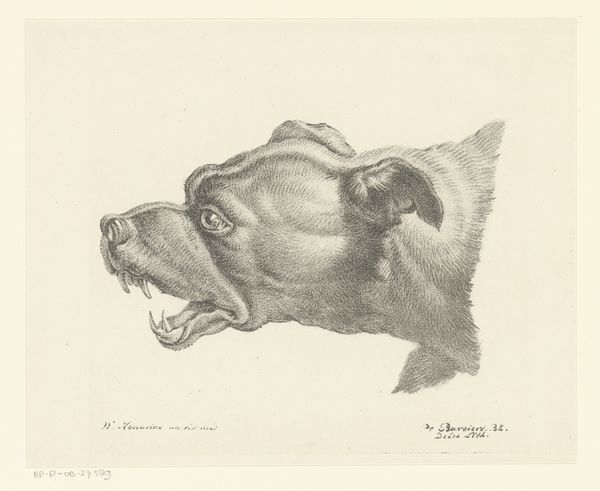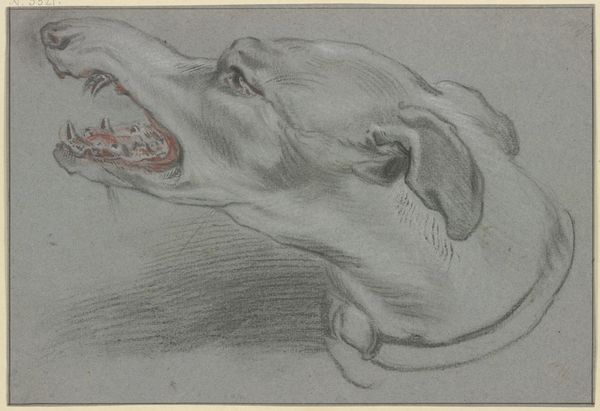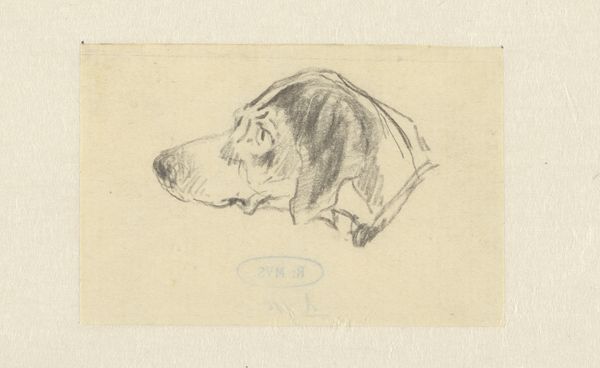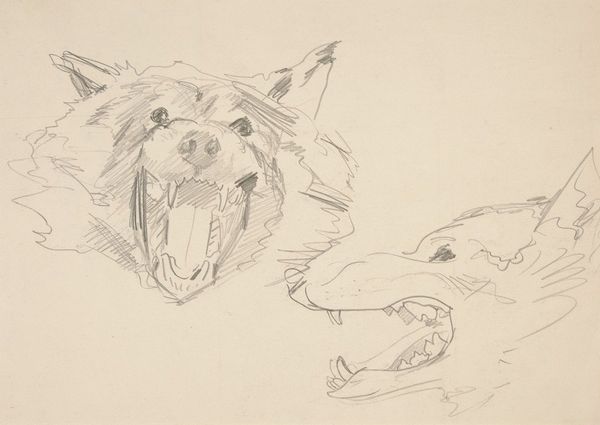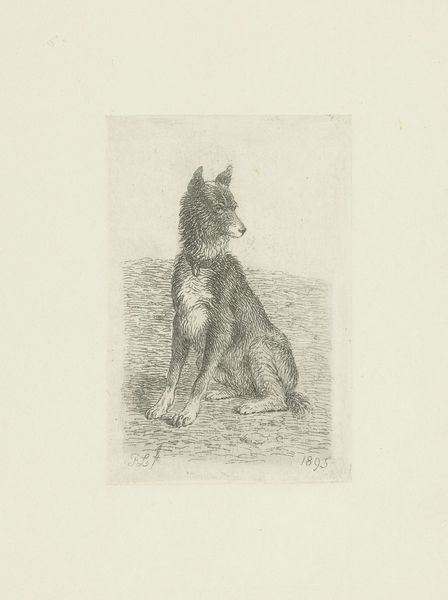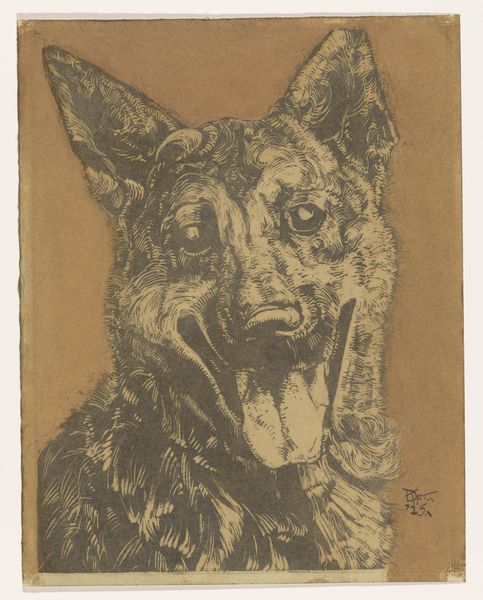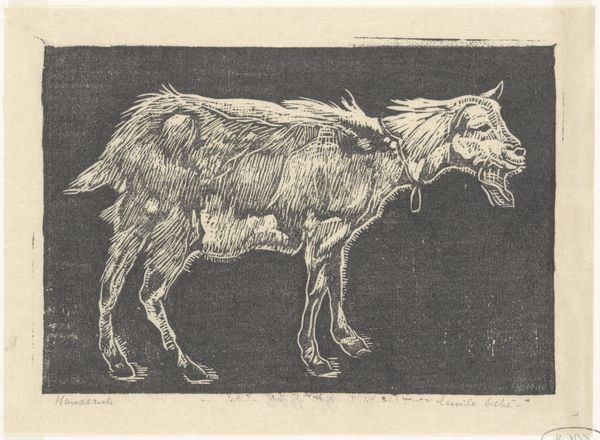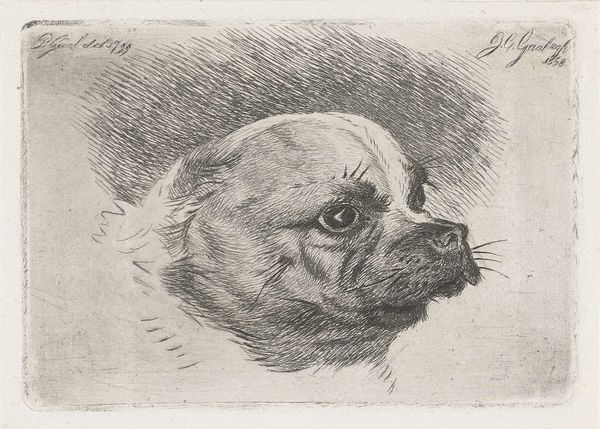
drawing, paper, pencil
#
portrait
#
pencil drawn
#
drawing
#
amateur sketch
#
toned paper
#
light pencil work
#
pencil sketch
#
paper
#
personal sketchbook
#
pencil drawing
#
pencil
#
sketchbook drawing
#
pencil work
#
sketchbook art
#
realism
Dimensions: height 270 mm, width 370 mm
Copyright: Rijks Museum: Open Domain
Curator: Look at this pencil drawing from the early 19th century, created by Pieter Bartholomeusz. Barbiers and titled "Kop van een wolf of hond," Head of a Wolf or Dog. It's part of the Rijksmuseum's collection. Editor: It's intense. The animal's bared teeth and wide eyes... there's a real ferocity captured, despite the humble medium. Curator: Exactly. The drawing showcases Barbiers' skill in capturing raw emotion through simple lines. What do you think accounts for the intensity you describe? Editor: The open mouth, first. It's a primal symbol—a threat, a warning. It evokes instinctive fear. And then the subtle details, like the furrowed brow and tensed ears. Are we meant to see a wolf or a dog? Its ambiguous symbolism almost makes the piece more powerful. Is this civilized or savage nature? Curator: It’s a compelling question! During this era, there was growing interest in natural history. Aristocrats owned domestic animals. Think of the increased cultural obsession with classification and scientific progress influencing artists, where representing an animal head like this serves as almost like an scientific study. Editor: Yes, the ambiguity, coupled with the precise draftsmanship, creates a tension. One part speaks of nature being scrutinized and contained, and the other—the emotional truth—refuses to be subdued. The tone is powerful here, achieved with basic pencil and paper; there is no color, and no spectacle! Curator: And that speaks to its strength as a study, as it doesn't seek to elevate its subject or appeal to an audience using complex means. The animal looks fierce because animals are, in fact, fierce. The animal looks like the tamed animal on our carpets but acts like something from the forest primeval. And its message remains resonant even now. Editor: Precisely. The open maw has stayed with me throughout the viewing; I feel it embodies the powerful potential lurking within things seemingly safe or well-understood. Curator: And, for me, the history of sketching informs the way audiences perceive its purpose. Editor: Agreed, both in art history and symbolically we leave changed.
Comments
No comments
Be the first to comment and join the conversation on the ultimate creative platform.
